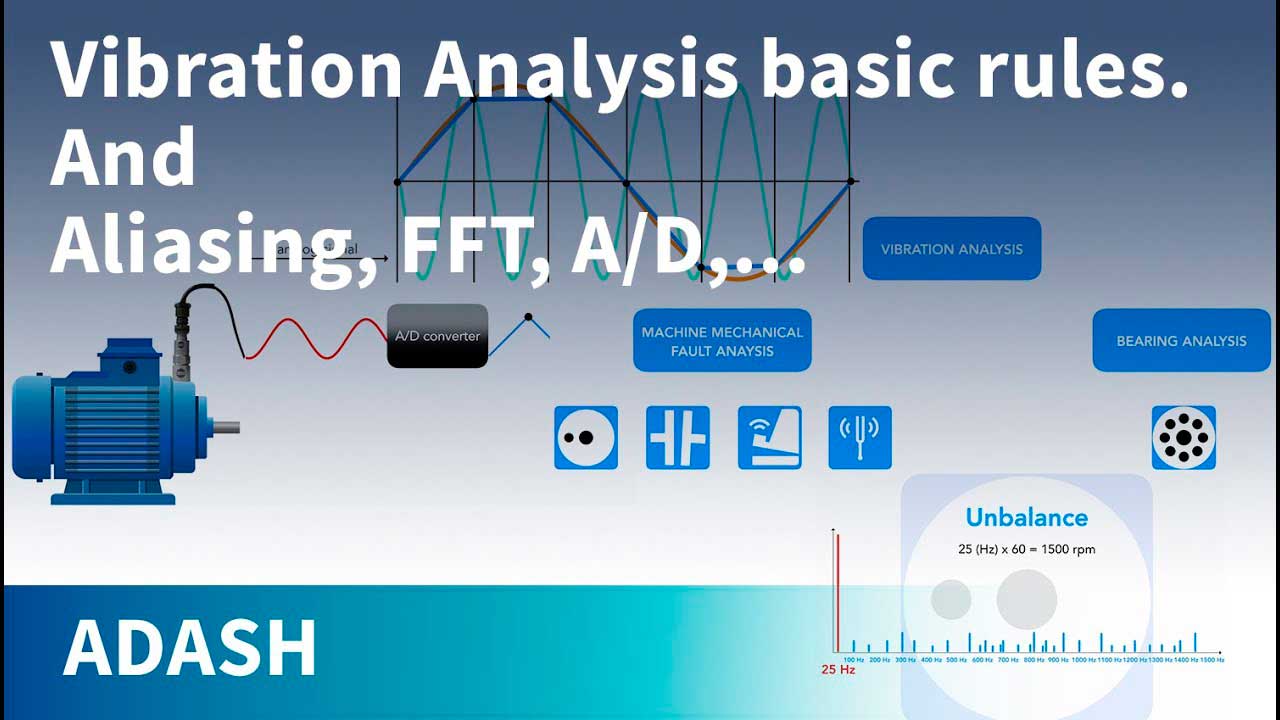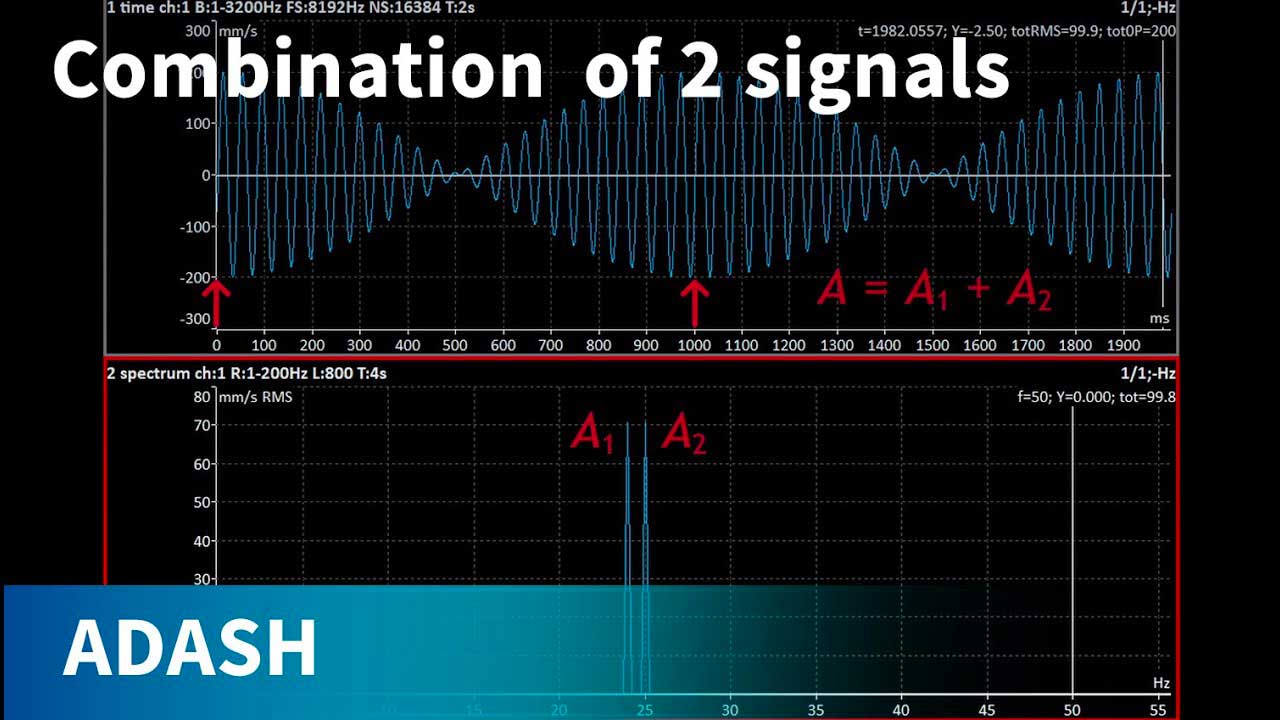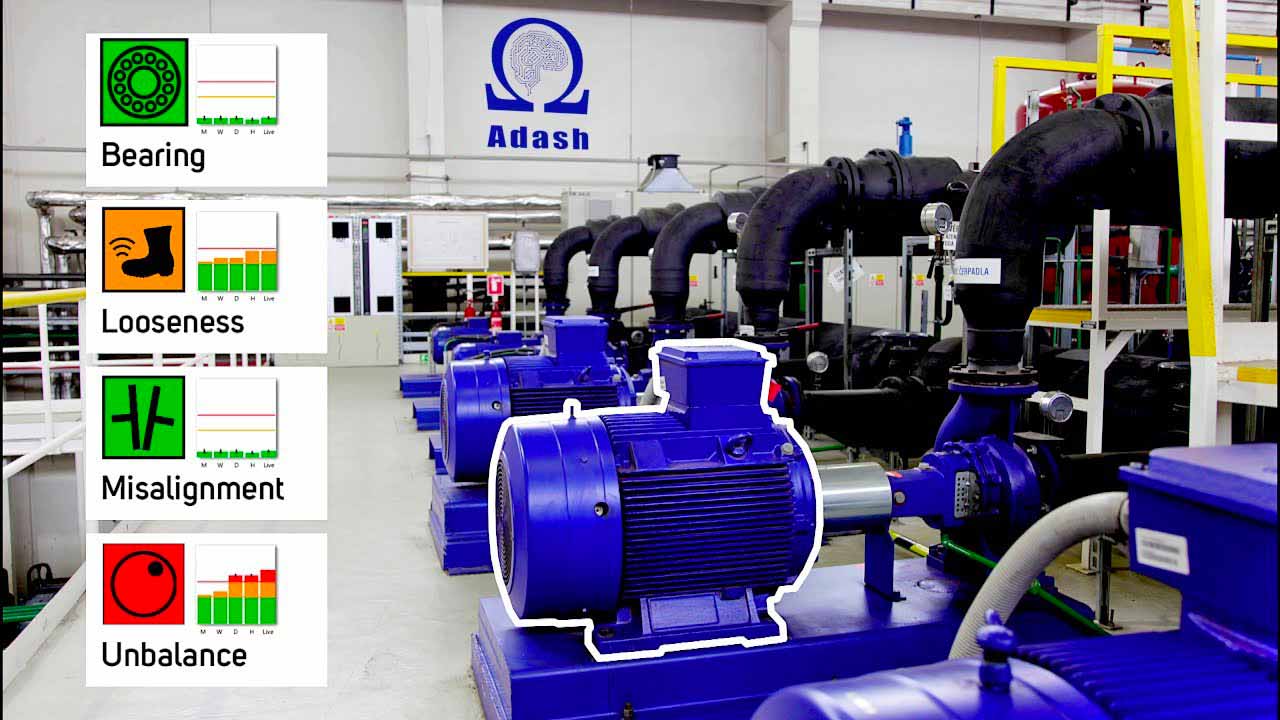Equilibrar la calidad ISO 21940 (1940)
29.06.2023
Bienvenidos al próximo video de Adash sobre el equilibrio y la norma ISO 1940 (ISO 21940). El texto de la norma 1940 es bastante difícil de leer. Estoy seguro de que muchos de ustedes intentaron leerlo y se dieron por vencidos. En este video, simplifico el texto de la norma ISO 1940 (ISO 21940).
¿Qué es la calidad del equilibrio? Es lo que describe la norma. Por lo general, todos usamos el nivel de vibración como calidad del equilibrio. Si las vibraciones son bajas, entonces estamos satisfechos. Pero la norma usa otro concepto.
Por ejemplo, tenemos un rotor con un desequilibrio cero. Monto la masa en alguna posición. La pregunta es: "¿Puedo hacer funcionar y usar esta máquina con este punto pesado?" ¿Es el desequilibrio aceptable para un funcionamiento seguro? En otras palabras, me gustaría saber qué tan pesado puede ser el punto pesado para permitir que la máquina funcione.
En otras palabras, ¿cuál es el desequilibrio residual aceptable o permisible? Para obtener un funcionamiento satisfactorio del rotor, el desequilibrio residual Ures no debe ser mayor que un valor permisible Uper.
¿Cuál es la unidad para Uper? La unidad del SI es kg por metro, pero es más práctico g por mm. Lo explicaré más adelante. Describe el punto pesado. Nos dice que la masa específica se monta en un radio específico.
Cuando el rotor está funcionando, se crea una fuerza centrífuga. Y esta fuerza nos hace daño. Provoca daños en los cojinetes. La fórmula es esta. La fuerza F es igual a la masa m por el radio r por el cuadrado de la velocidad angular omega. Puedes ver que la masa doble duplica la fuerza. El radio doble también duplica la fuerza. El omega es la velocidad. Puedes ver la raíz cuadrada de eso. Ahora, una breve explicación del radián. Cuando hablamos de ángulos, utilizamos los grados como unidad. Ya sabes que el círculo tiene 360 grados. Puedo decir que una rotación tiene 360 grados. Pero también existe la unidad radián para el valor del ángulo. Una rotación es 2 * π radianes. Ahora sabemos que un círculo tiene 360 grados o 2 * π radianes. Simplemente puedes deducir que 1 radián es igual a 57,3 grados. Ahora sabes que tenemos dos unidades para medir ángulos. El grado y el radián. El omega es la velocidad angular, el radián por segundo es la unidad. Es la velocidad de rotación. Usamos la velocidad en Hz normalmente. Es el número de rotaciones por segundo. Y podemos convertir fácilmente la velocidad angular omega a Hz. La fórmula es que omega es igual a 2 veces pi por la frecuencia en Hz. Una rotación omega es igual a 2 * π. Cuando necesitamos f rotaciones por segundo, entonces debemos multiplicarlo por f..
Ahora, sobre la relación entre el desequilibrio residual permisible y la masa del rotor. Observa el rotor en la imagen, por ejemplo, el desequilibrio residual permisible es de 100 000 g mm. Puedo volver a calcularlo a 100 g m. Ahora agrego el mismo rotor siguiente a este. Este nuevo tiene el mismo desequilibrio residual permisible individual, el rotor dos veces más pesado tiene un desequilibrio residual permisible dos veces mayor. .
En general, para rotores del mismo tipo, el desequilibrio residual permisible Uper = eper * masa del rotor (kg). Debemos multiplicar el eper por la masa. Uper es proporcional a la masa del rotor. Significa que puedo usar este valor para los próximos cálculos. Es un valor relativo que depende de la masa del rotor. Se llama desequilibrio residual específico permisible eper..
El rotor tiene el centro geométrico justo en el medio del círculo. Cuando está perfectamente equilibrado, entonces también el centro de gravedad está en la misma posición. Ahora agregué un punto pesado. El centro de gravedad se mueve. Puedo medir la distancia entre el centro geométrico y el centro de gravedad en micrómetros..
Esa es la razón por la que usamos estas unidades para eper. Podemos trabajar con esta fracción. Kg es igual a 1000 veces gramo. Ahora podemos acortar los gramos. Obtenemos mm dividido por 1000. Y es el micrómetro. Significa que eper es la distancia permisible entre el centro geométrico y el centro de gravedad en micrómetros para una masa de rotor de un kilogramo..
Estamos acostumbrados a usar RPM o Hz para la velocidad. No radianes, que es mejor para los cálculos. La circunferencia de un círculo con radio uno es dos π. Cuando la velocidad es 1 Hz, entonces esta rotación de 2 π debe realizarse en 1 segundo. Significa que la velocidad angular omega es igual a 2 π. Cuando la velocidad es mayor, entonces la velocidad angular omega es igual a 2 π por la frecuencia de velocidad en Hz. .
¿Y qué pasa con la velocidad del rotor? La norma ISO 1940 lo dice. La experiencia muestra que para rotores del mismo tipo, el valor de desequilibrio específico residual permisible eper varía inversamente con la velocidad del rotor. No se deriva solo de la experiencia. Esto corresponde exactamente a las leyes de la física.
Expresada de otra manera, esta relación se da por la siguiente ecuación, eper multiplicado por Ω es un valor constante. Significa que para una velocidad dos veces mayor obtenemos un desequilibrio específico residual permisible eper dos veces menor. La pregunta es ¿cuán grande es el valor constante?





